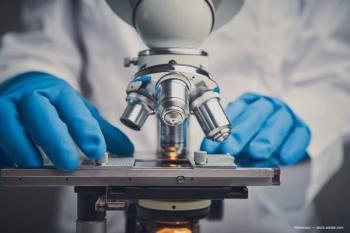
- Ophthalmology Times: March 1, 2020
- Volume 45
- Issue 4
Topography devices + cloud technology float together
Topography technology is evolving to include smaller and portable smartphone-based options.
This article was reviewed by Stephen D. Klyce, PhD, FARVO
Corneal topography can be measured using a number of different devices, the most frequently used of which is a circular Placido device.
Current Placido devices include a large-disc instrument (Keratograph 5M, Oculus), and a cone-shaped Placido device (Medmont E300, Medmont International) that fits well in the eye socket, providing broader coverage of the corneal topography.
Related:
The Placido devices also have undergone a modification of the circular device to one that provides a grid pattern, e.g., the Cassini topographer (i-Optics) and the iDesign (Johnson & Johnson Vision) that eliminate some possible errors that can occur during corneal curvature reconstruction.
The Cassini topographer also uses the second Purkinje image reflected from the posterior corneal surface, from which an estimate of the posterior corneal astigmatism can be obtained, according to Stephen D. Klyce, PhD, adjunct professor of ophthalmology, Icahn School of Medicine at Mount Sinai, NY.
Slit-scan devices, the Scheimpflug instruments, also have become a corneal tomography standard for measuring pachymetry as well as anterior and posterior corneal curvatures, he noted.
Related:
Corneal topographers and tomographers have been evolving to include additional technologies. Two such instruments are the VX120 (Visionix) and the OPD-Scan III (Nidek), which add wavefront aberrometry to Placido topography, plus Scheimpflug tomography in the case of the VX120.
Other Placido topography devices have combined rotating Scheimpflug slits to measure both corneal surfaces along with pachymetry. Examples of these instruments are the Galilei G4 (Ziemer), Sirius (CSO), and TMS-5 (Tomey).
A recent capability that has been added is the ability to measure axial length, as seen in the Aladdin HW3.0 (Topcon), Galilei G6 (Ziemer), and the Pentacam AXL (Oculus); the first two include Placido topography, whereas the latter implements Scheimpflug tomography. The Pentacam offers the ability to measure the axial length and includes wavefront aberrometry as well.
Related:
Future of topography
The technology is evolving in a different direction, and what could be considered more practical topographic technologies are in the pipeline. These are smaller, portable, and
smartphone- and cloud-based, Dr. Klyce explained.
These topographers will sit on a slit lamp and send data to the cloud. The Delphi smartphone-based corneal topography system from Intelligent Diagnostics is pending FDA approval.
“The optics of the Delphi unit are amazing,” Dr. Klyce said. The system uses a more sensitive camera than the Magellan system to obtain much finer detail in the center of the cornea. The central ring of the Delphi is 230 μm in diameter compared with the Magellan, which is 500 μm in diameter.
Related:
The Delphi system includes an auto-capture system. After the image is captured and the color-coded map is verified, the image is sent to the cloud server where higher-level calculations are performed for the various types of displays.
All displays are available remotely to the provider using any device with a web browser.
“A major advantage of putting all the data in the cloud is that multiple devices can be placed all over the world and all can send data to the cloud to form a large database of several hundred thousand examinations that in turn can be used for big data analyses for the development-using artificial intelligence-of smarter screening algorithms,” Dr. Klyce noted.
There are other advantages of data storage in the cloud, one the use of corneal topography as one factor in tele-ophthalmology. Another advantageis the possibility of virtual corneal topography screening. A consideration is that most current topography diagnostic systems were trained to only differentiate keratoconic corneas from normal corneas.
The topographers and tomographers that are available today have a growing number of capabilities: pachymetry, wavefront aberrometry, pupillometry, air puff tonometry, auto-refraction, screening programs, IOL biometry, cataract grading, dry eye parameters, and contact lens fitting.
Stephen D. Klyce, PhD, FARVO
E: [email protected]
Dr. Klyce is a consultant/advisor to Intelligent Diagnostics LLC, Nidek Inc., NTK Enterprises, and Oculus Optikgeräte GmbH.
Newsletter
Don’t miss out—get Ophthalmology Times updates on the latest clinical advancements and expert interviews, straight to your inbox.
















































.png)


